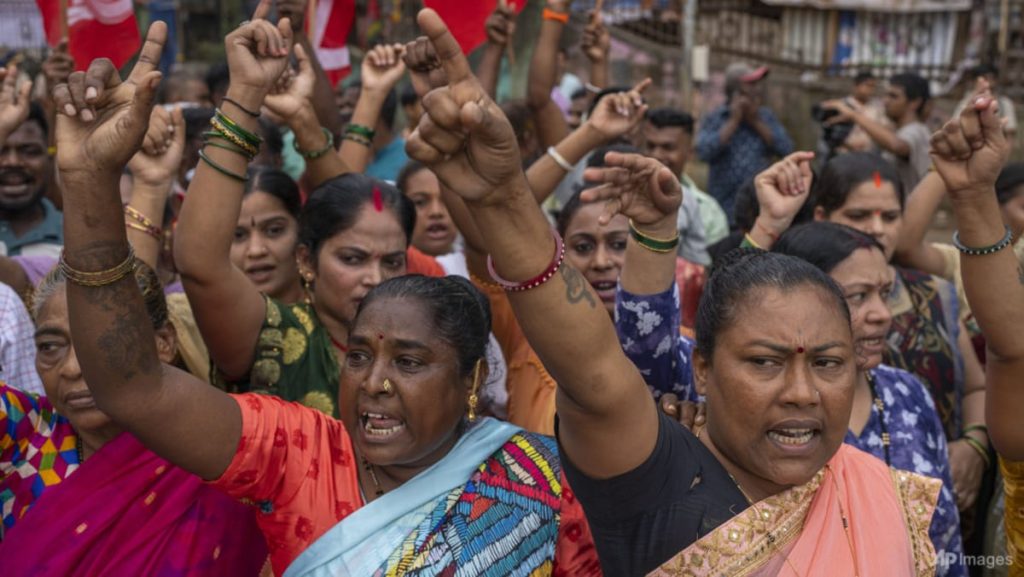Dharavi, a sprawling tapestry of resilience and industry nestled within the heart of Mumbai, stands on the precipice of transformation. The ambitious redevelopment project, spearheaded by the Adani Group, aims to reshape this iconic slum into a modern urban hub. However, for residents like Raju Bhoite, a leather goods store owner, the prospect of change is fraught with anxiety. Bhoite, whose family has established deep roots in Dharavi, fears losing not just his ancestral property but also the established customer base that sustains his livelihood. The uncertainty surrounding relocation and the daunting challenge of rebuilding a business from scratch weigh heavily on his mind, reflecting the broader apprehension felt by many within the community.
The Adani Group’s US$619 million bid, approved by the Maharashtra state government, has faced a turbulent journey. Political opposition, fueled by allegations of favoritism due to the perceived close ties between Gautam Adani and Prime Minister Narendra Modi, threatened to derail the project entirely. The November 2023 Maharashtra assembly elections, resulting in a resounding victory for the BJP-led Mahayuti alliance, breathed new life into the redevelopment plans. The strong mandate secured by the ruling coalition has diminished the political risk, paving the way for the project to move forward. However, the path remains complex, shadowed by ongoing legal challenges faced by Adani himself.
Adding another layer of complexity to the Dharavi redevelopment saga are the legal battles engulfing Gautam Adani. Accusations of bribery related to solar energy contracts, brought forth in a US court case, have cast a long shadow over the Adani Group. While these legal woes present a potential hurdle, industry experts remain optimistic about the project’s viability. The scale and complexity of the Dharavi redevelopment demand a developer with substantial financial resources and execution capabilities, qualities that the Adani Group, despite its current challenges, is perceived to possess. The prevailing view among analysts is that if the Adani Group cannot successfully navigate this intricate undertaking, then it’s unlikely any other entity can. This belief underscores the unique position the Adani Group occupies in the Indian development landscape.
The Dharavi redevelopment represents a monumental undertaking, a complex interplay of urban planning, social dynamics, and economic considerations. The sheer scale of the project, encompassing over 2.1 square kilometers and housing an estimated one million people, presents a formidable challenge. Beyond the physical transformation of the area, the project grapples with the intricate task of balancing the interests of diverse stakeholders. The lives and livelihoods of Dharavi’s residents, many of whom belong to marginalized communities, are intertwined with the fabric of this vibrant, albeit informal, economy. Ensuring their equitable participation in the redevelopment process and safeguarding their existing social and economic networks are crucial aspects of a successful transformation.
The vision for a revitalized Dharavi encompasses modern housing, improved infrastructure, and enhanced access to essential services. The redevelopment aims to replace the existing cramped and often unsanitary living conditions with well-planned residential units, providing residents with access to basic amenities like clean water, sanitation, and electricity. Moreover, the project seeks to integrate Dharavi into the broader urban fabric of Mumbai, fostering greater connectivity and accessibility to opportunities beyond the slum’s boundaries. The creation of new commercial spaces and the formalization of existing businesses are intended to boost economic activity and generate employment opportunities within the community. However, realizing this vision requires careful consideration of the potential social and economic dislocations that such a large-scale transformation could entail.
The success of the Dharavi redevelopment hinges on a delicate balancing act. It requires navigating the complexities of land acquisition and resettlement, ensuring adequate compensation for affected residents, and providing them with suitable alternative housing. Equally important is the need to preserve the vibrant informal economy that characterizes Dharavi. The slum is home to a multitude of small-scale industries, ranging from leather goods and pottery to recycling and textiles. These micro-enterprises provide livelihoods for thousands of residents and contribute significantly to Mumbai’s economic vitality. Integrating these informal businesses into the formal economy, while avoiding displacement and disruption, presents a significant challenge for the redevelopment project. Ultimately, the true measure of success will lie in the extent to which the redevelopment improves the lives of Dharavi’s residents, empowering them to participate fully in the city’s economic and social life.

